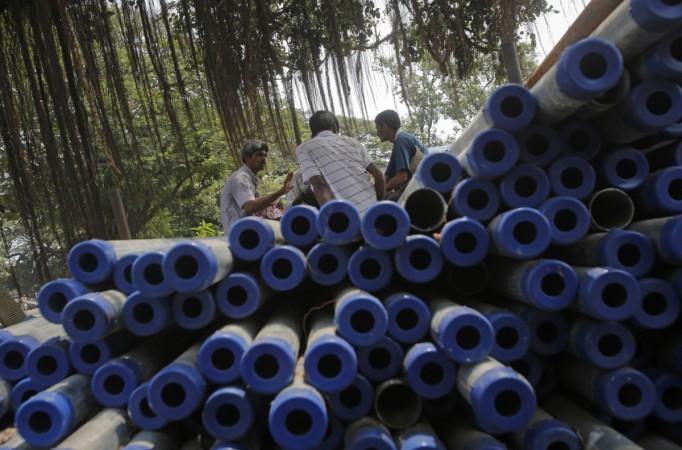
Update at 5.45 PM: The BSE Sensex ended 52 points higher at 31,155 while the NSE Nifty closed at 9,618, a gain of 11 points.
Foreign institutional investors (FIIs) were net sellers of Indian equities worth Rs 161 crore on Wednesday (June 14), according to provisional data released by the National Stock Exchange.
Bhushan Steel closed 6.57 percent lower at Rs 73.25.
Original story:
Shares of Bhushan Steel plunged 10.2 percent to Rs. 70.35 on the Bombay Stock Exchange (BSE) on Wednesday in response to media speculation that the company could be one of the 12 defaulters identified by the RBI for initiating bankruptcy proceedings. The stock later recovered to trade at Rs. 72.65, down 7.40 percent, at around 12.45 pm. Lanco Infratech was down 7.86 percent to Rs. 2.58 at around 1.10 pm on the BSE.
The 12 accounts constitute almost 25 percent of Indian banks' massive bad loans estimated at Rs. 10 lakh crore ( (including gross NPAs and restructured loans).
Other accounts that are reportedly part of the 12 accounts include Alok Textiles, Essar Steel and Lanco. The RBI's move follows the passage of an ordinance on May 12, paving the way for initiating decisive action against defaulters.
Ironically, the steel sector has been identified by the Modi government for a leap in production and sales in its National Steel Policy released on May 4 this year.
The BSE Sensex was trading 48 points higher at 31,151 led by Reliance Industries, Dr Reddy's Labs and Hero Motocorp.
On Tuesday, the Reserve Bank of India (RBI) came out with a statement, marking the most-definitive step to tackle India's growing bad loan menace.
"An Internal Advisory Committee (IAC) was accordingly constituted and it held its first meeting on June 12, 2017. The IAC also arrived at an objective, non-discretionary criterion for referring accounts for resolution under IBC.
"In particular, the IAC recommended for IBC reference all accounts with fund and non-fund based outstanding amount greater than ₹ 5000 crore, with 60% or more classified as non-performing by banks as of March 31, 2016. The IAC noted that under the recommended criterion, 12 accounts totaling about 25 per cent of the current gross NPAs of the banking system would qualify for immediate reference under IBC.
"The Reserve Bank, based on the recommendations of the IAC, will accordingly be issuing directions to banks to file for insolvency proceedings under the IBC in respect of the identified accounts. Such cases will be accorded priority by the National Company Law Tribunal (NCLT)," the central bank said in the statement.
As for other defaulters, the RBI asked banks to come up with a resolution plan within six months.
















